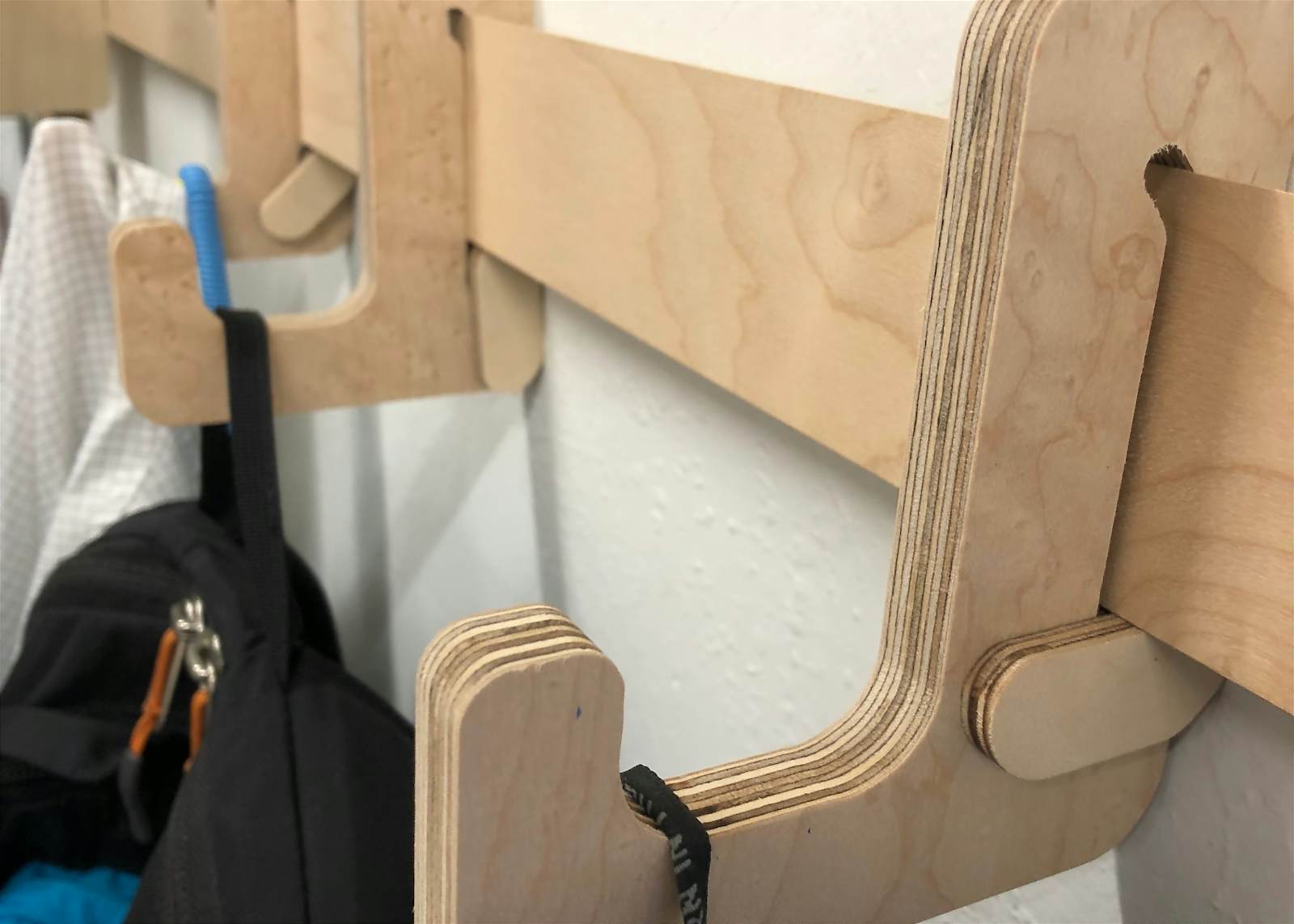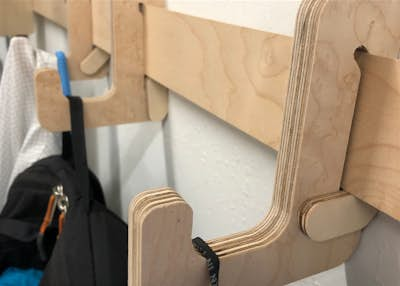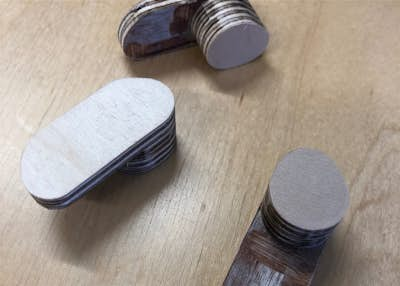Cleat cam lock
By shaperilio|BY-NC-SA 4.0 License|Created January 18th, 2019






Cam levers to lock things, (e.g. "Winner" hooks) in place on a cleat. I made these to prevent my "Winner" hooks from falling off the cleat when I take my jacket off a hook, for example.
"Winner" hook:
https://www.shapertools.com/hub/creators/59bbcf2b291ebbfa71254b59/shares/5c33ed792800470017e94e09
10 min
Easy
54
Files included (3)
3/4" thick wood (the thickness of what you want to lock + 1/4")
Shaper Origin
The "cleat cam" SVG file shows how to alter the dimensions of the cam levers to suit your cleat dimensions. Here at HQ we have issues where the cleats are not a constant width, thus identical cam levers and hooks have different load levels depending on which cleat they're on.
The ideal position for locking a hook in place is to have the lever all the way down (as shown in the photo in the middle hook). This will make it so any forces on the hook will try to turn the lever into the wall, which it obviously can't do! The closer the lever is to horizontal, the more easily it can wiggle itself unlocked.
For your own cleats, I suggest you play around with the offset between the two circles forming the lobe. I've provided files for both 0.150" and 0.200" separation. The former worked best for my cleats. If your cleats are very consistent, one option is to make the cam lock a bit too large, then sand a flat so you can *just* get it to 90 degrees. That will give you a very positive lock.
I've provided mirror images in each file. This will allow you to, e.g. make a symmetric lever for something that's double-wide. You can also play with using the levers "on the wrong side" as the locking feel is different in each orientation.